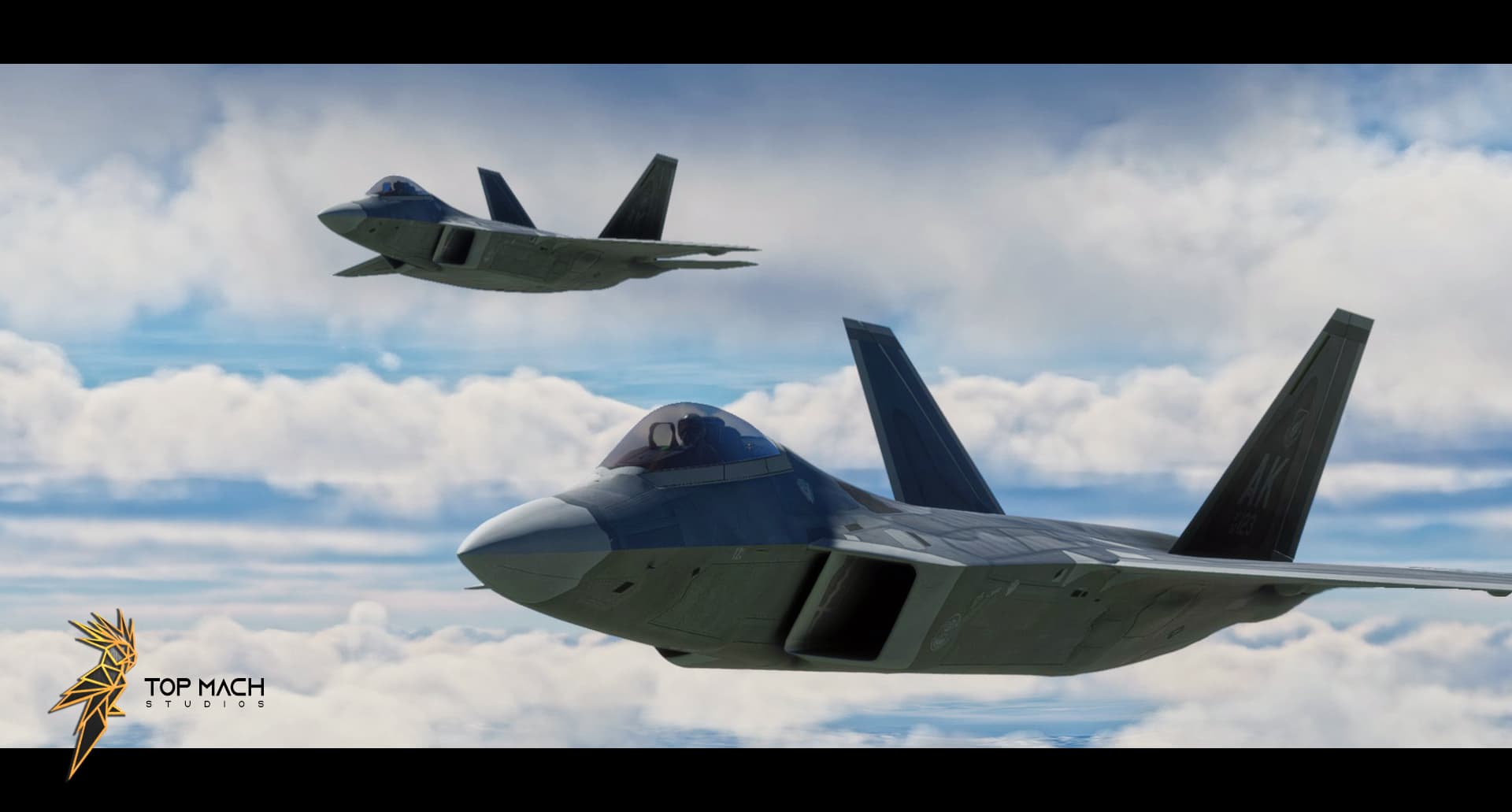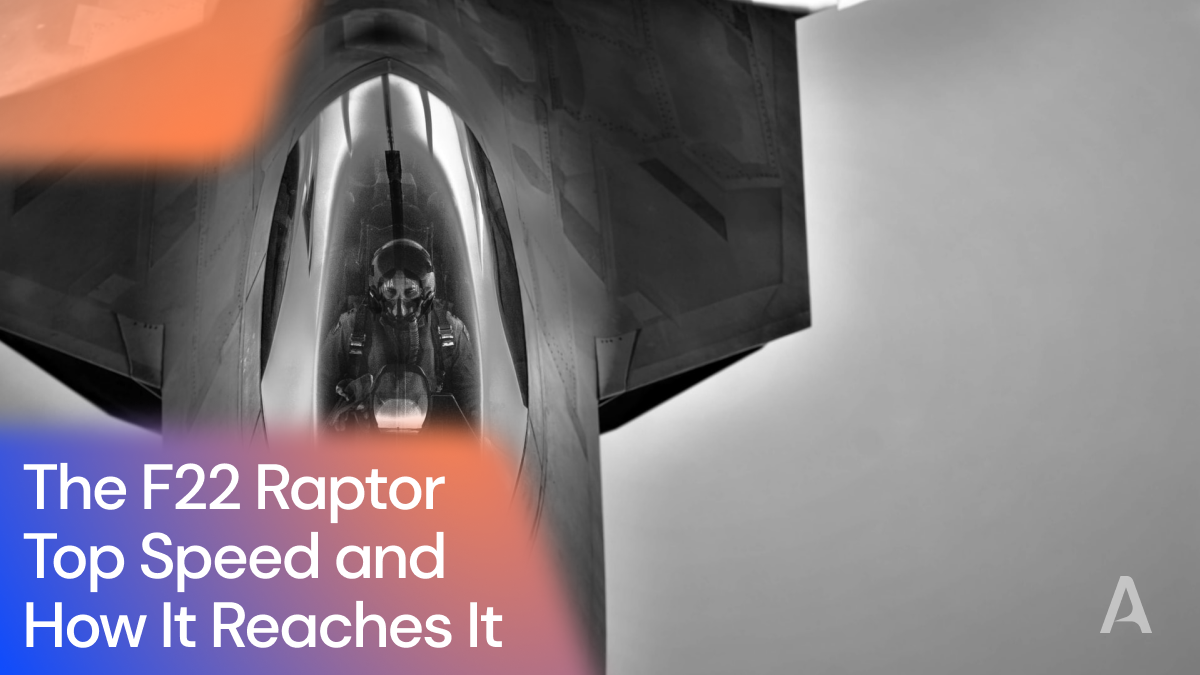F22 Stall Speed - The Lockheed Martin F-22 Raptor is an American single-seat, twin-engine, all-weather stealth strategic fighter aircraft designed for the United States Air Force (USAF). As a result of the USAF's Advanced Tactical Fighter (ATF) program, the aircraft was designed as an air superiority fighter, as well as a ground attack, electronic warfare, and signals intelligence capability. Prime contractor Lockheed Martin built most of the F-22's airframes and weapon systems and performed final assembly, providing Boeing with the wings, fuselage, avionics integration and training systems.
The aircraft first flew in 1997 and was designated as the F-22A and F/A-22, officially in December 2005 as the F-22A. Although the USAF originally planned to purchase a total of 750 ATFs, the program was reduced to 187 operational aircraft in 2009 due to high cost and the military's focus on counterinsurgency operations. restrictions on production, export, and development of the cheaper and more versatile F-35;
F22 Stall Speed

Despite its long development and operational difficulties, the F-22 has become an important part of the USAF's strategic air force. The fighter's combination of stealth, aerodynamic performance, and mission system provides unprecedented air combat capabilities and sets the benchmark for its production.
How Tight A F 22 Can Turn During A Power Loop
The F-22 is expected to enter service by the 2030s and will indeed replace the USAF's Next Generation Air Dominance (NGAD) fighter component.
In 1981, the US Air Force identified the need for an Advanced Tactical Fighter (ATF) to replace the F-15 Eagle and F-16 Fighting Falcon. Codenamed "Cut Skies," this high-altitude combat program was influenced by new developments in Soviet air defense systems and emerging global threats, including the Sukhoi Su-27 "Flanker" and the Mikoyan MiG-29 "Fulcrum." . - A class of combat aircraft.
It will take advantage of new technologies in the design of the HGV, including composite materials, lightweight alloys, advanced flight control systems and avionics, more powerful propulsion systems and, most importantly, stealth technology. In 1983, the ATF Concept Development Team became the Systems Program Office (SPO) and managed the program at Wright-Patterson Air Force Base. A Request for Demonstration and Validation (Dem/Val) proposals (RFP) was issued in September 1985, with requirements heavily emphasizing stealth and supercruise. Mergers between companies were encouraged due to the large investment required to develop the technology needed to achieve performance goals. Among the security companies,
Lockheed and Northrop were selected on October 31, 1986. Lockheed, through its Skunk Works division, worked with Boeing and General Dynamics, Northrop McDonnell Douglas, and the two contractors worked on the 50-month dam/shaft phase. Flight tests of two technology demonstration prototypes, the YF-22 and YF-23. Also, Pratt & Whitney and General Electric contracted to develop the YF119 and YF120 engines for the ATF engine competition.
F 22 Raptor: The Infinite Flight Guide
Dem/Val focuses on systems engineering, technology development plans, and risk mitigation in aircraft designs; In fact, after a low selection, the Lockheed team completely changed the airfoil configuration in the summer of 1987, due to weight analysis during detailed design, with major changes, from a trapezoid to a diamond-like delta wing plan. in the foreground. planning area.
The contractors used a wide range of analytical and empirical methods, including computational fluid dynamics, wind-tunnel testing, and radar cross section (RCS) calculations and pole testing. The Lockheed team will conduct approximately 18,000 hours of wind-tunnel testing. Avionics development was characterized by extensive testing and prototyping and supported by ground and flight laboratories.
During Dem/Val, SPO used performance and cost trade-off studies conducted by contractors to adjust ATF requirements and eliminate significant burden and cost drivers when marginal cost was incurred. Short take-off and landing (STOL) requirements have been relaxed to restore lightness, saving considerable weight. With avionics being the main cost driver, side-by-side radars were eliminated, and the infrared search and track (IRST) system was downgraded from multi-color to single-color and also eliminated. However, space and cooling arrangements were made to allow these components to be added later. The outlet requirement has been lowered to the McDonnell Douglas ACES II level from the new design. Although the contractor's teams tried to increase the weight, the total weight estimate was increased from 50,000 lb (22,700 kg) to 60,000 lb (27,200 kg), resulting in a thrust requirement of 30,000 lb (133 kN) to 35,000 lb (133 kN). lb (156 kN) sq.

Each team produced two prototype air vehicles for Dem/Val, two for the two demon variants. The YF-22 made its first flight on September 29, 1990 and achieved a supercruise of Mach 1.58 in flight tests. After the prototype's Dem/Val flight test, on April 23, 1991, USAF Secretary Donald Rice announced the team of Lockheed and Pratt & Whitney as the winners of the ATF and gin competitions.
Pdf) Comparative Study Of F 22 Raptor And Chengdu J 20
The YF-23's design was considered stealthy and faster, while the YF-22, with its vectored design, was more maneuverable, less bulky, and less dangerous.
The press speculated that the Lockheed team's design would also be adapted to the US Navy's Navy Advanced Tactical Fighter (NATF).
As the program moved into full-scale development, or engineering and manufacturing development (EMD), production of the F-22 differed from that of the YF-22 despite having the same configuration. The leading edge sweep angle of the wing was reduced from 48° to 42°, the vertical stabilizers were moved to the side and the area was reduced by 20%.
The radome was modified for better radar performance and the wings were trimmed for the Annas. To improve the pilot's visibility and aerodynamics, the roof was moved 7 inches (18 cm) forward and the intakes were moved 14 inches (36 cm). The fuselage, wings and stabilizer fins were shaped to improve aerodynamics, strength and stealth characteristics. The production airframe is designed with a service life of 8000 hours.
Comparison Of Modern Fighter Aircraft
In addition to advances in airframe and propulsion technology, the F-22's avionics and software are unprecedented in complexity and scope, incorporating multiple SSR systems and 1.7 million lines of software integration.
A Boeing 757 modified with F-22 mission systems served as the flight test avionics laboratory to initiate mission program development and troubleshooting.
The Cold War and the dissolution of the Soviet Union in 1991 reduced the Department of Defense's (DoD's) pursuit of new weapons systems, and the following years saw a decline in DoD speed; As a result, the F-22 EMD has been modified and extended several times. The division of work between the teams was largely from Dem/Val to EMD, but prime contractor Lockheed took over the warship portfolio of General Dynamics in Fort Worth, Texas in 1993 and thus most of the air force. Lockheed Martin Aeronautics

Dem/Val initially performed work at Skunk Works in Burbank and Palmdale, California, before moving program offices and EMD operations from Burbank to Marietta, Georgia, where it performed final assembly; Program partner Boeing provided additional airfield components, avionics integration and training systems in Seattle, Washington.
F 22 F 15 Hybrid Fighter Craft
The first EMD F-22, tail number 4001, was launched on April 9, 1997 at Dobbins Air Force Base in Marietta, and first flew on September 7, 1997.
The USAF originally intended to order 750 ATFs beginning in 1985, with service testing in the late 1990s, at a total program cost of $44.3 billion and a procurement cost of $26.2 billion. A major aircraft survey in 1990 led by Secretary of Defense Dick Chey led to 648 aircraft entering service by 1996 and into service in the early to mid-2000s. After the Cold War, when it was reviewed in 1993 and 1997, the fund's volatility reduced the total to 339, and in 2003 it was reduced again to 277.
In 2004, with a focus on asymmetric counterinsurgency warfare in Iraq and Afghanistan, the DoD under Secretary Donald Rumsfeld reduced its planned procurement to 183 operational aircraft, although 381 was preferred to provide squadron numbers for the USAF's air campaign structure.
The multi-year procurement plan was implemented in 2006 to save $15 billion for the 183 F-22s distributed to the fighter squadrons, at a total program cost of $62 billion.
Us Reveals Image Of Fighter That Will Replace The F 22
In 2008, Congress passed the Diffs Speed Bill, which brought the total number of orders for aircraft production to 187.
The first batch was delivered in September 2000, supporting 1,000 contractors and suppliers in 46 states and 95,000 jobs, and continued for 15 years at a peak rate of two aircraft per month.
Configuration for the first flight test and expansion envelope, the third block is the 2.0 aircraft, which was built to mirror the internal structure of the production airfields and allowed it to test the full flight load. A further six EMD aircraft were built in block 10 configuration for testing and upgrading, the latter two being considered production quality aircraft. Production of operational units included 74 units of 10/20 training aircraft and 112 units.

Stall speed, f22 top speed mph, torque converter stall speed, 4l60e stock stall speed, stock torque converter stall speed, stall speed converter, torque converter stall speed chart, f22 top speed, f22 max speed, f22 speed, stock 4l80e converter stall speed, f22 raptor speed
0 Comments